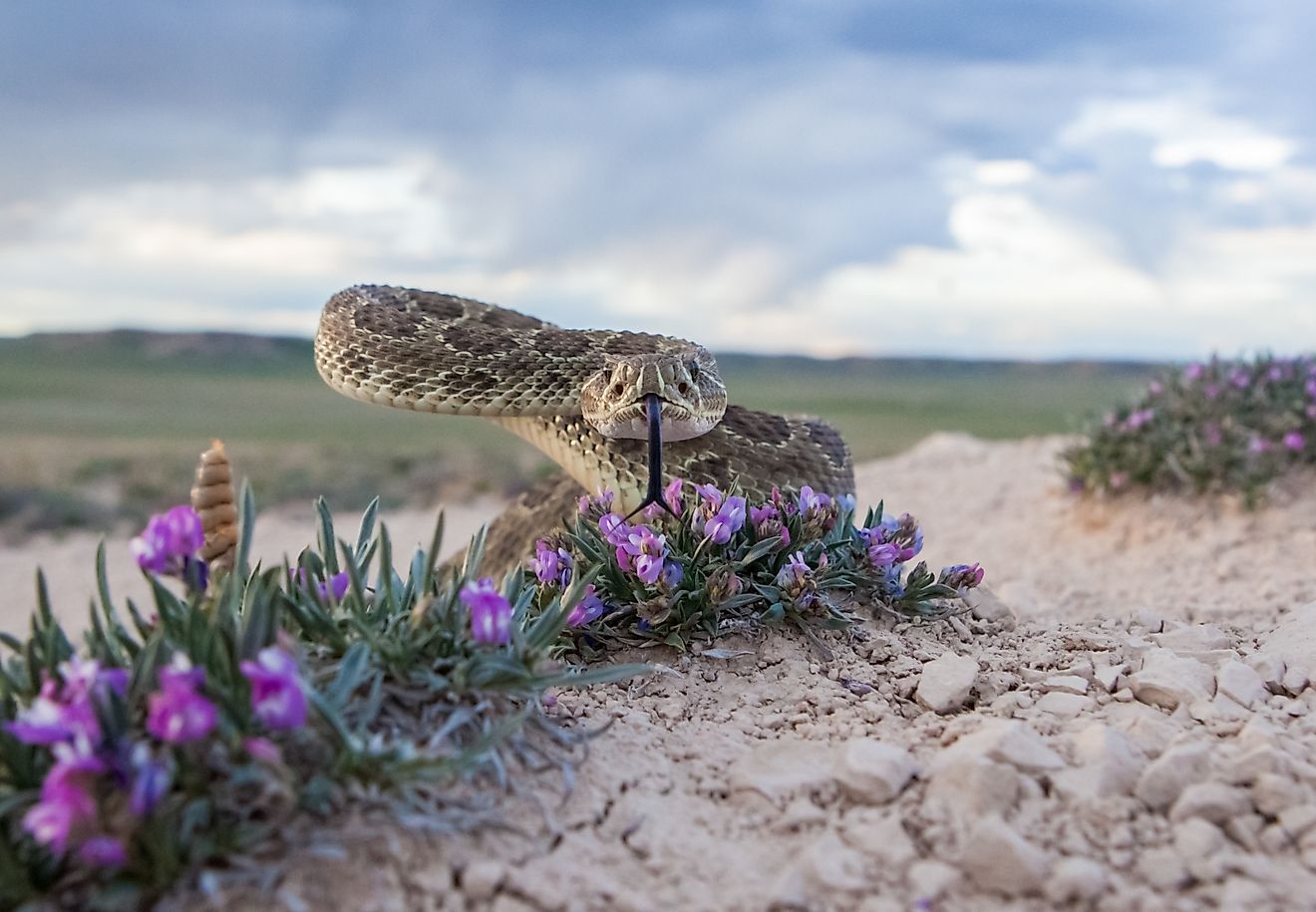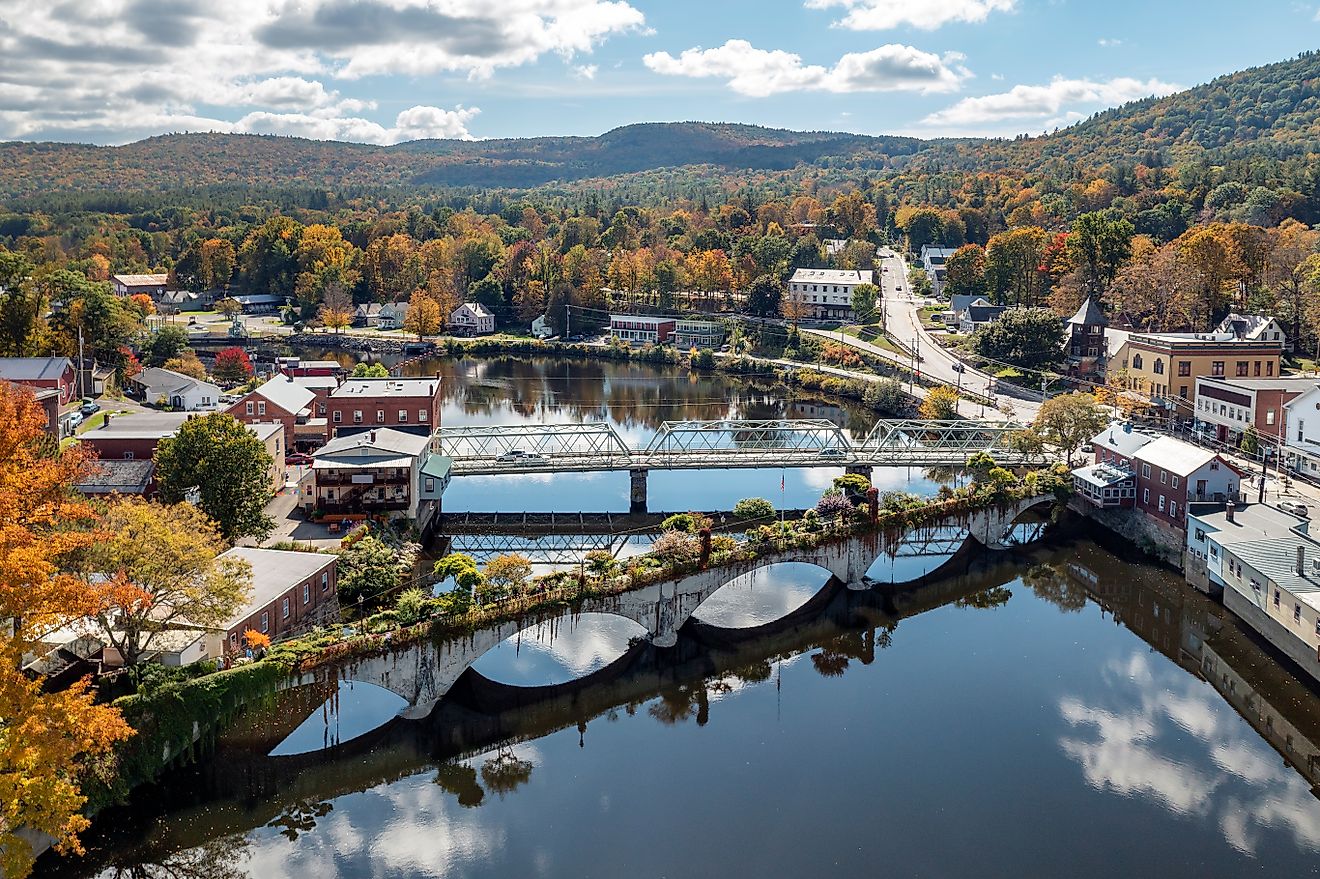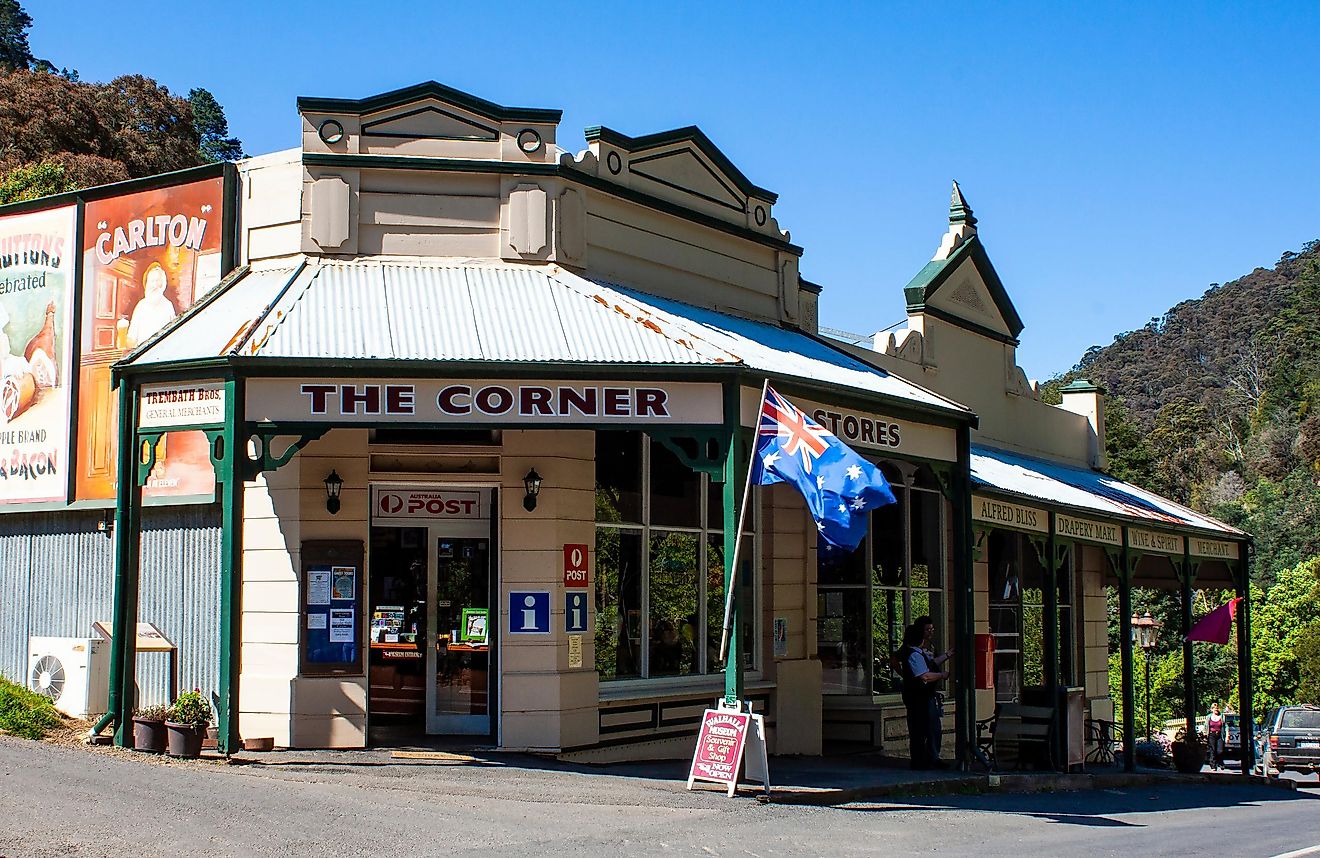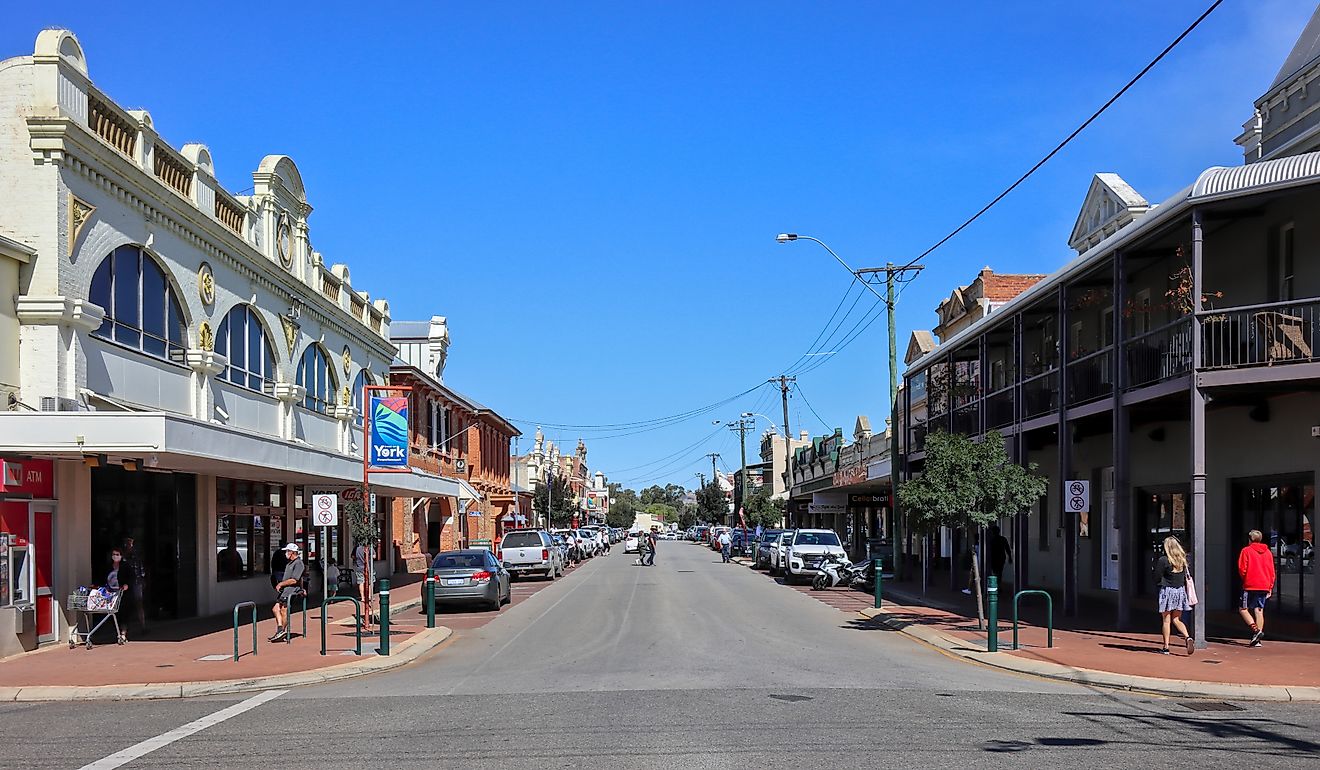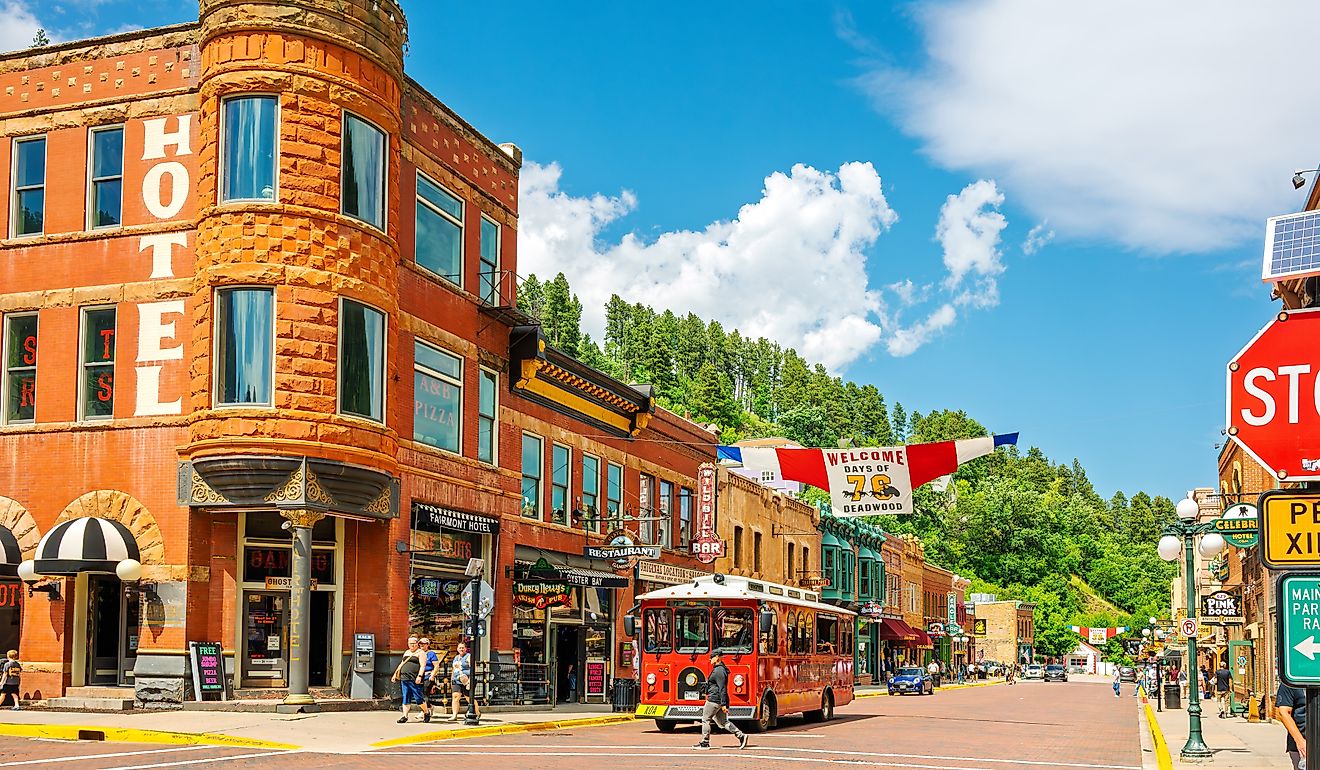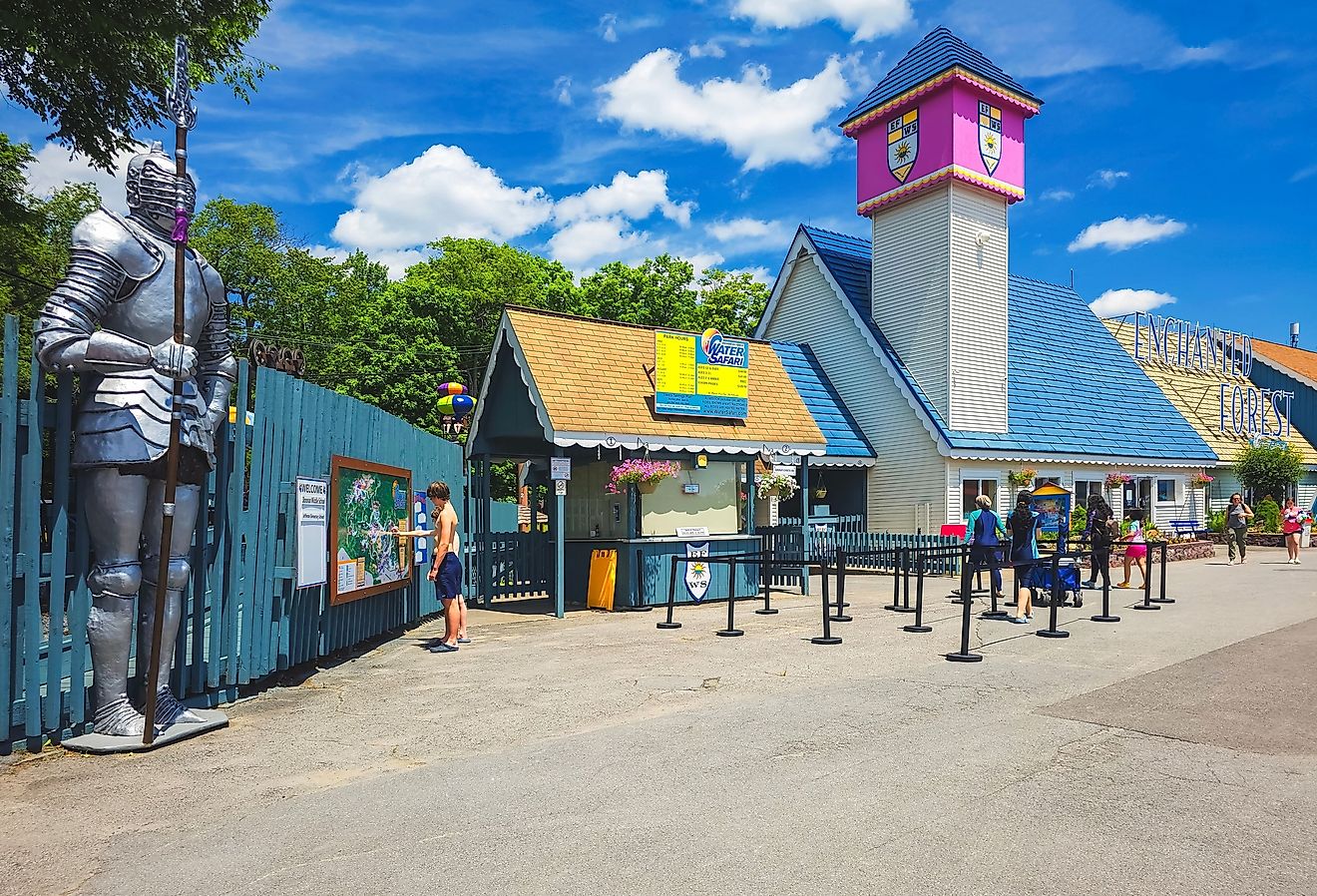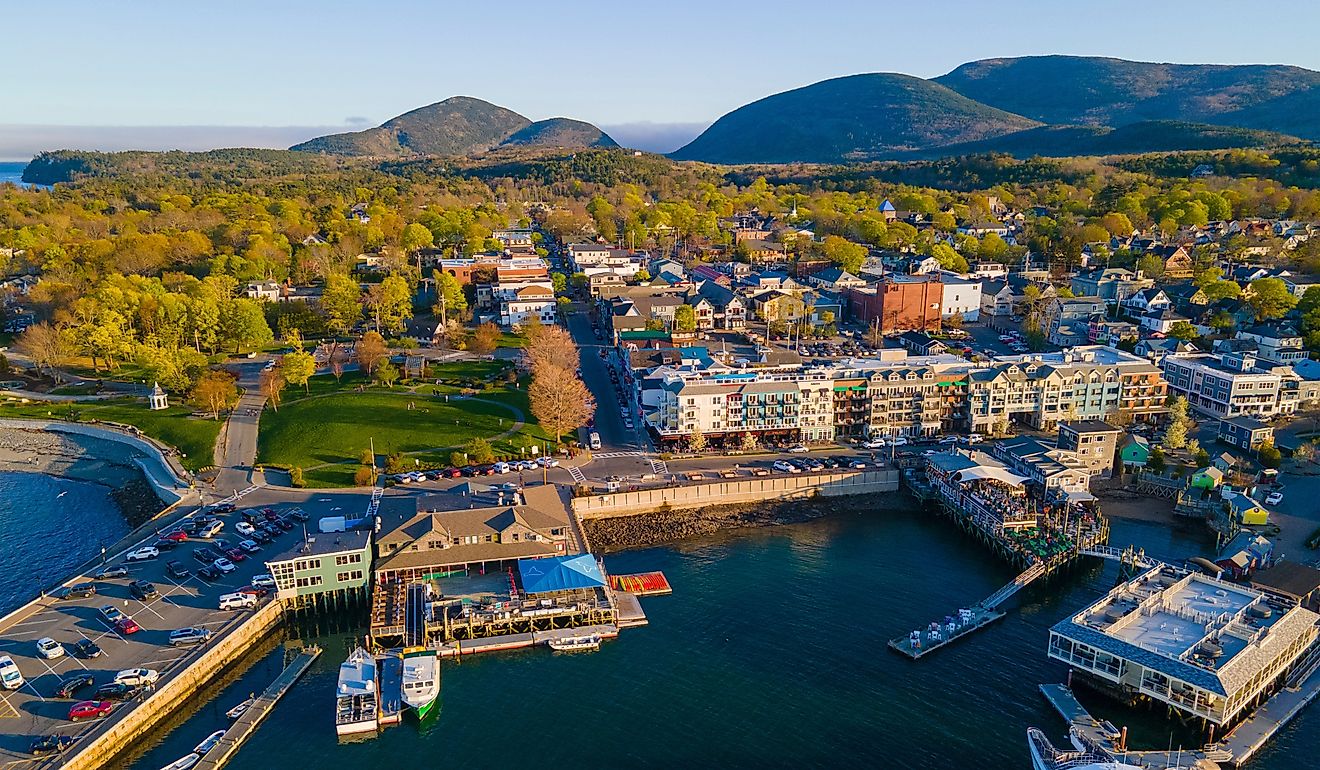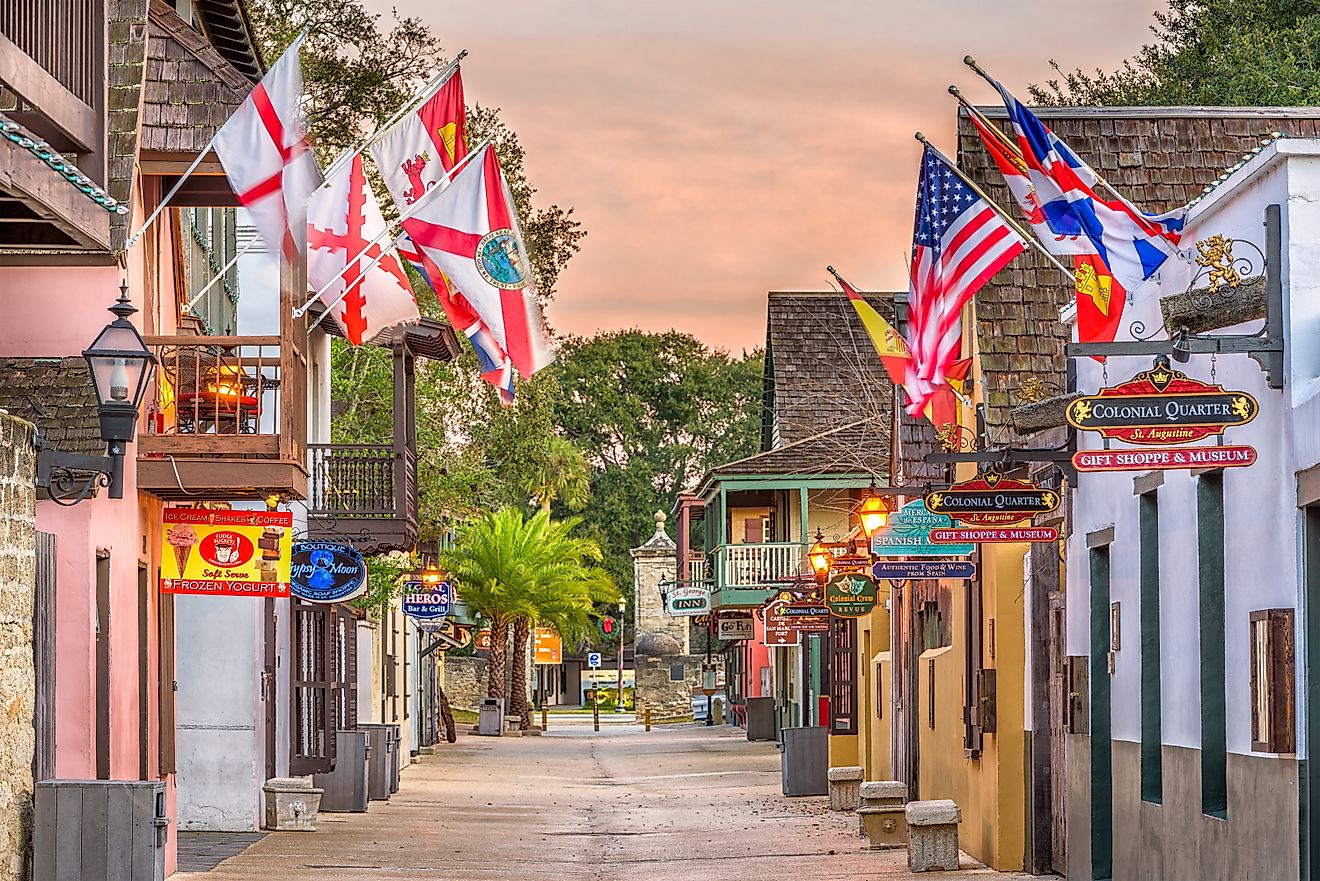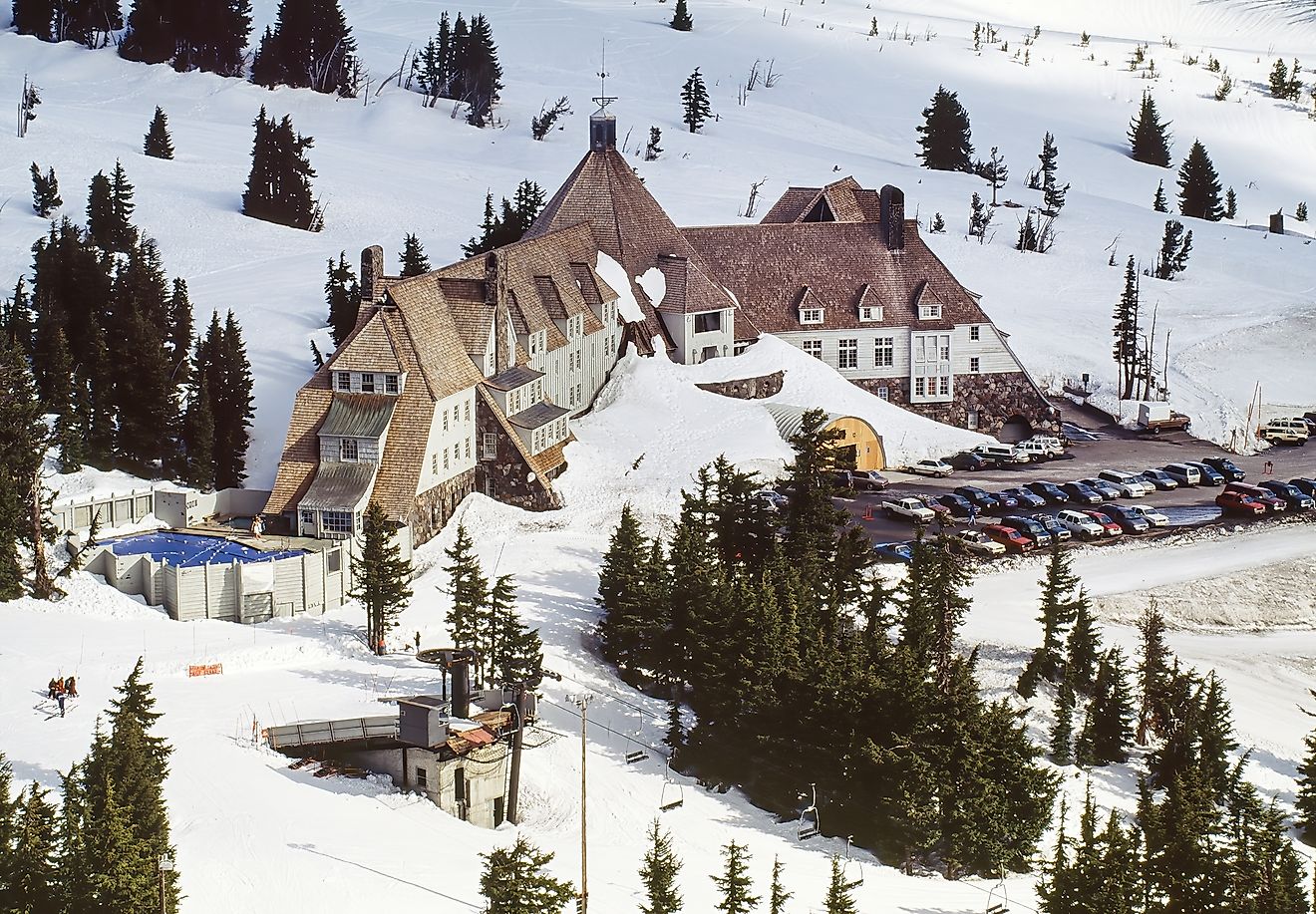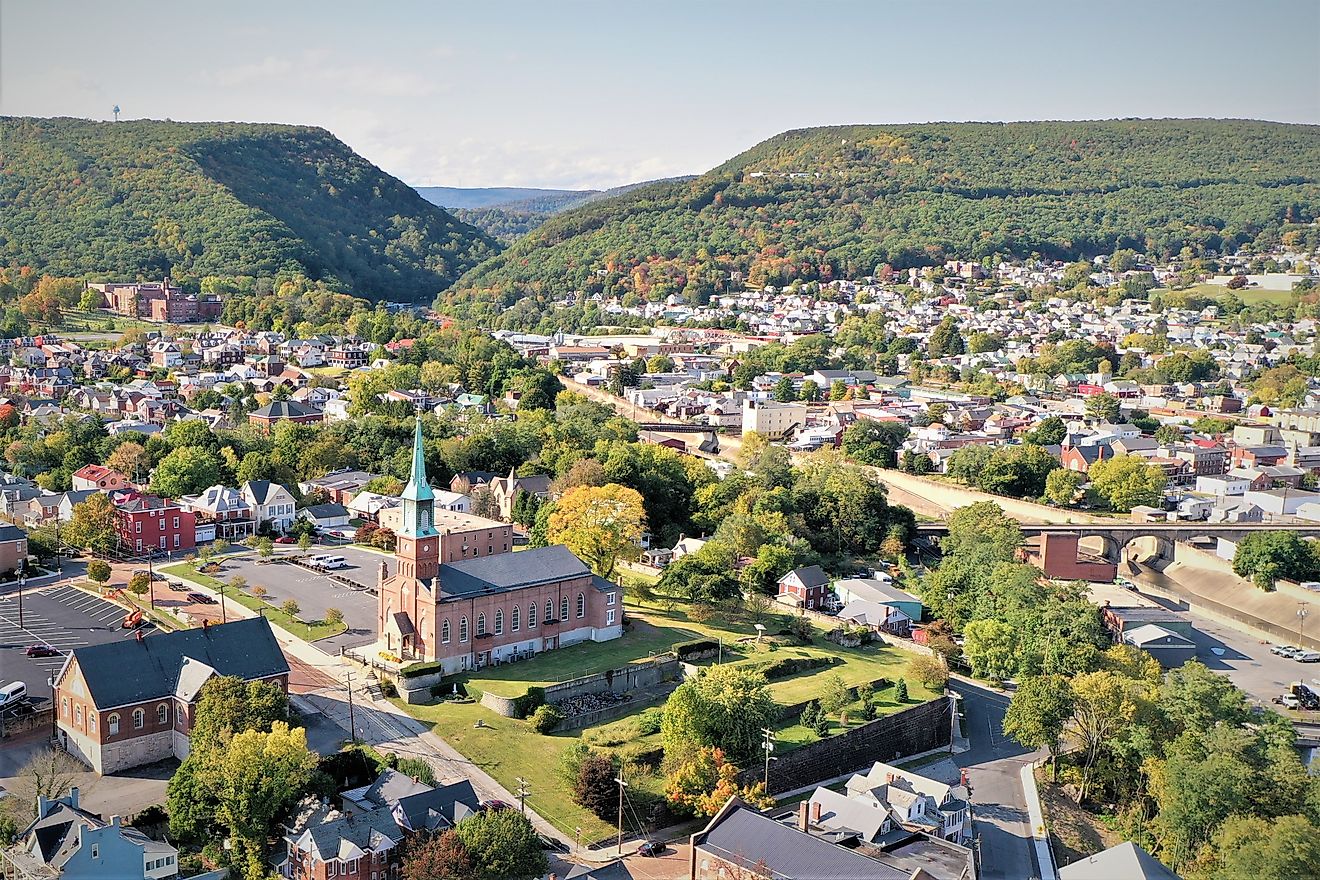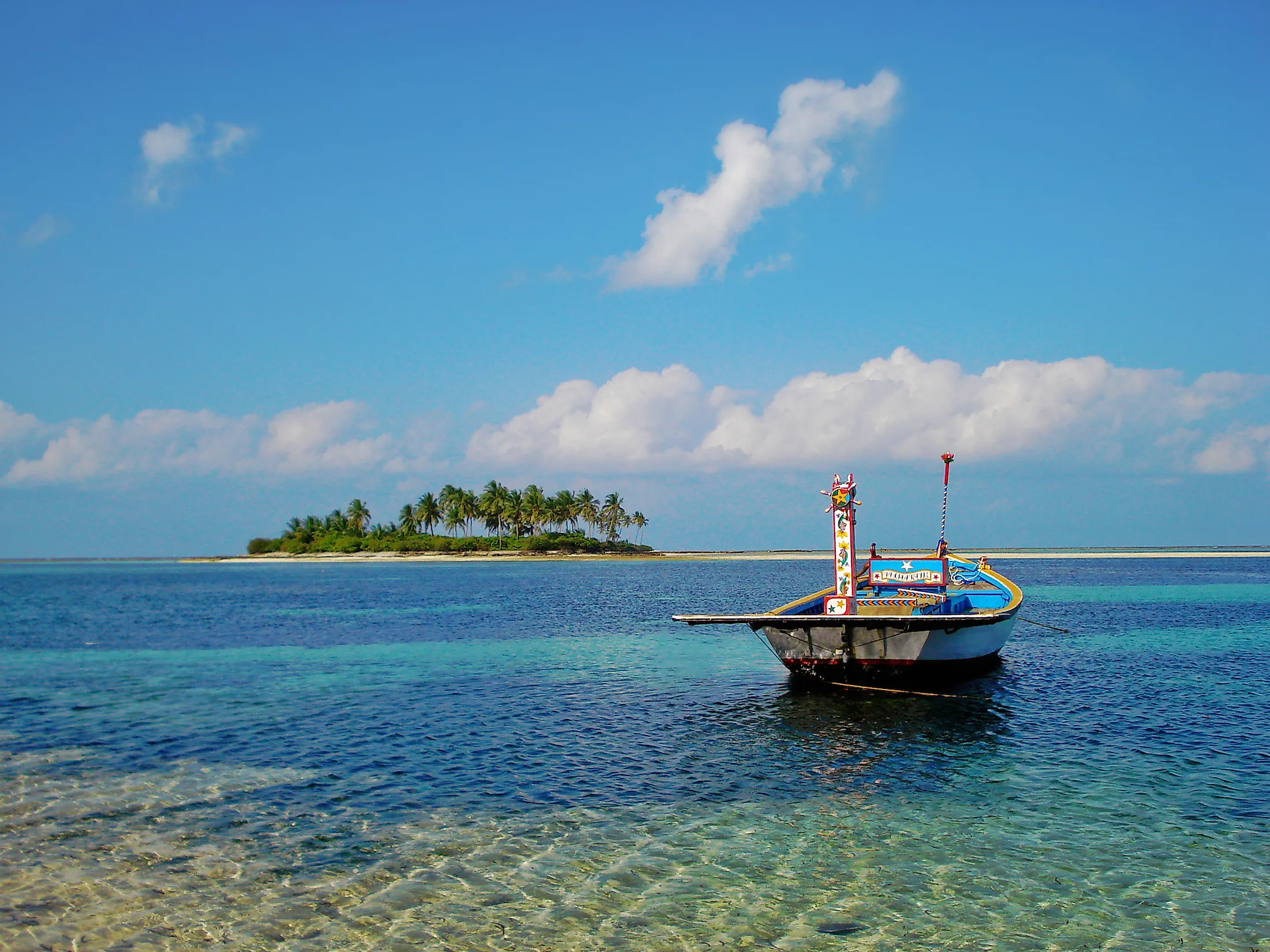
Lakshadweep, India
Also referred to as Laccadives, Lakshadweep is an archipelago comprising 36 islands situated off the southwestern coast of India in the Arabian Sea. Covering a total surface area of only 32 sq. km, the Lakshadweep Islands form India’s smallest Union Territory. The name “Lakshadweep” means “one hundred thousand islands” in Malayalam and Sanskrit languages. The Lakshadweep Islands are known for their lush green landscapes, exotic sandy beaches, and abundant flora and fauna.
Geography Of Lakshadweep
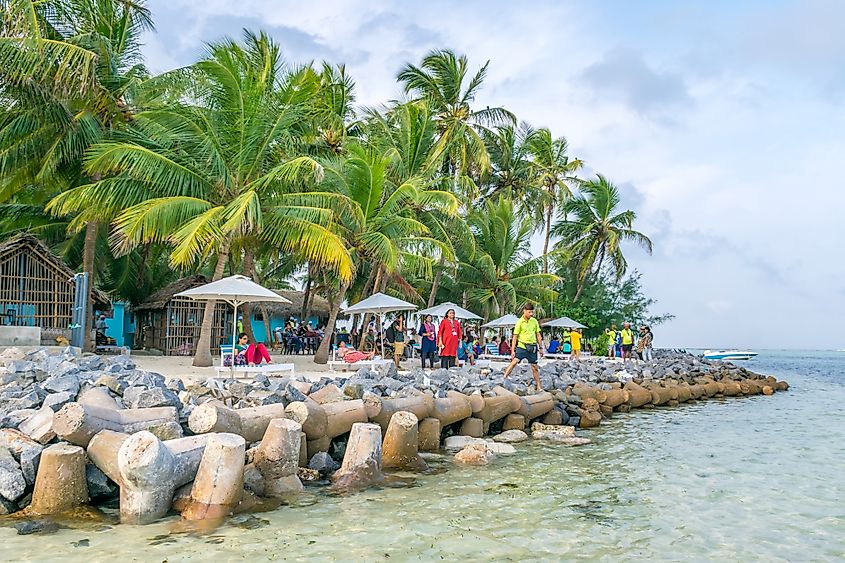
Lakshadweep is an archipelago composed of 36 islands spread over a vast area in the Arabian Sea off India’s southwestern coast. This uni-district Indian Union Territory comprises 12 atolls, three reefs, and five submerged banks. In addition to this, there are also ten inhabited islands, 17 uninhabited islets, five submerged reefs, and four newly formed islets. The easternmost island is located at a distance ranging between 220 to 440km from the coastal city of Kochi in the Indian state of Kerala.
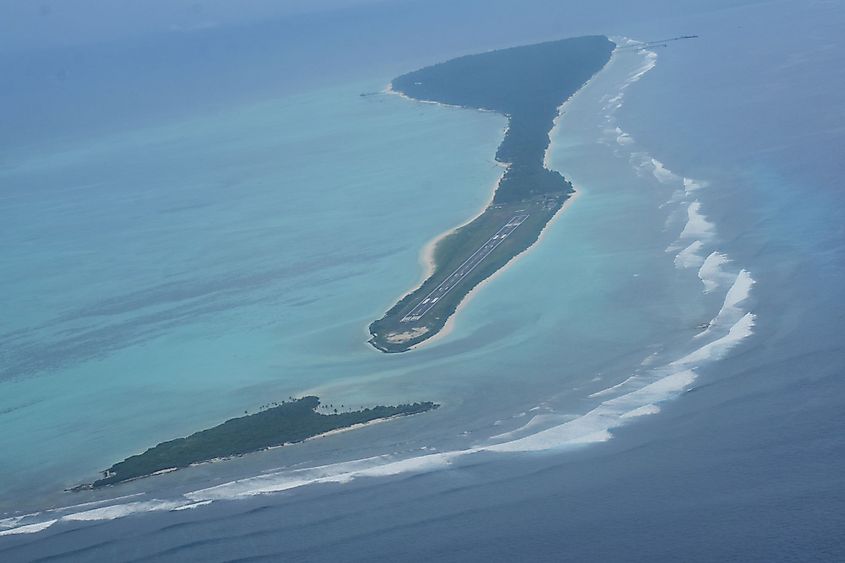
Though the Lakshadweep Islands cover a land area of only 32 sq. km, the islands contain a vast lagoon area of 4,200 sq. km, a territorial water area of 20,000 sq. km, an exclusive economic zone area of 400,000 sq. km, and a coastal line of 132km. The Lakshadweep Islands can be reached by ships and flights from the city of Kochi. Situated on the southern end of Agatti Island, the Agatti Aerodrome is the only airport in Lakshadweep.
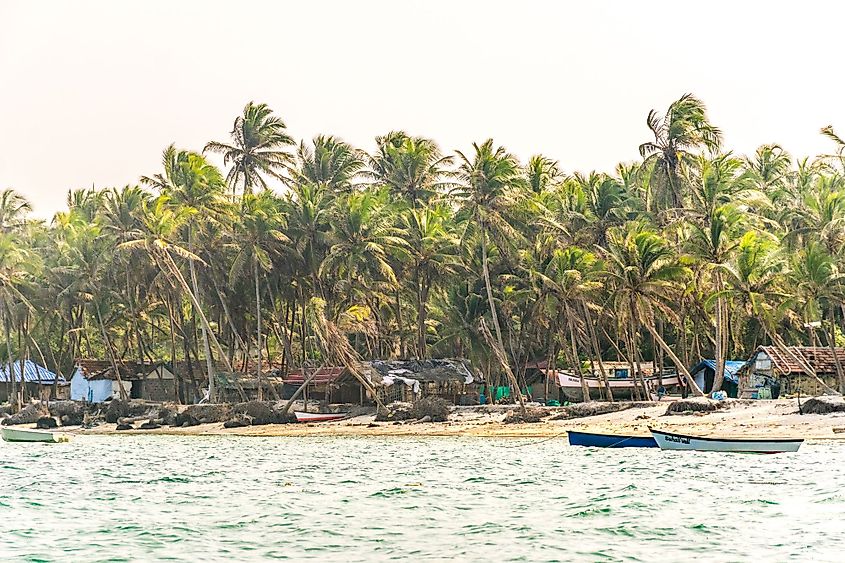
The Lakshadweep Islands, which form the northernmost of the Lakshadweep-Maldives-Chagos archipelagoes, are further grouped into several clusters. These include the Amindivi Group (consisting of 5 inhabited islands) in the north; the Laccadive Group (consisting of 4 inhabited and 12 uninhabited islands) in the center; and the Minicoy Group (consisting of 1 inhabited and one uninhabited island) in the south. Minicoy Island is separated from the neighboring Maldives in the south by the 8° channel by only about 120km. The Amindivi and the Laccadive islands have a submarine connection through the Pitti Bank. Together with the Minicoy Island, the Amindivi, and the Laccadive group of islands from the Coral Islands of India. Geological studies have revealed that almost all the atolls of the Lakshadweep Islands are oriented in the northeast-southwest direction, with low-lying coral islands on the eastern rim and a submerged reef on the western edge, enclosing a vast, shallow lagoon. The inhabited islands include Agatti, Amini, Androth, Bitra, Chetlat, Kadmat, Kalpeni, Kavaratti, Kiltan, and Minicoy. Located in Kavaratti Island, the census town of Kavaratti serves as the capital and administrative center of the Indian Union Territory of Lakshadweep. All these small, low-lying islands are composed of calcareous sand that has been derived from the corals.
Climate
Since the Lakshadweep Islands are located within the tropics and extend to the equatorial belt, these islands experience a tropical climate that becomes more equatorial in the southern islands of the Union Territory. The temperatures in Lakshadweep Islands generally range from 20°C to 32°C throughout the year. The islands experience a hot season from April to May, a wet rainy season from June to November, and a dry season from December to April. With about 80-90 rainy days a year, the Lakshadweep Islands receive an average annual rainfall ranging between 1,000mm to 2,000mm, which decreases as one moves from the southern to the northern direction. Even though the islands receive high rainfall, the lack of surface storage capacity makes freshwater a precious commodity in the Union Territory. The Lakshadweep Islands are rarely struck by tropical cyclones that move across the Arabian Sea.
Ecology Of Lakshadweep
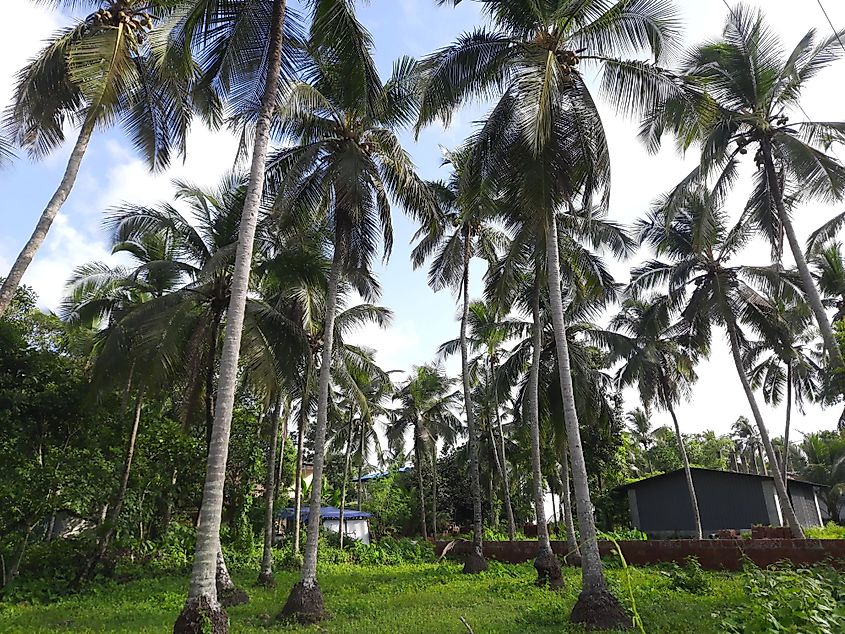
According to the Indian State of Forest Report 2021, the forest cover in Lakshadweep is 27.10 sq. km, which is 90.33% of the territory’s geographical area. Privately owned coconut plantations cover about 82% of the territory. Some other common trees in Lakshadweep include casuarinas, tamarinds, tropical almonds, pandani, banana, betel nut, etc. The Lakshadweep Islands possess a rich marine wealth which includes more than 82 species of seaweed, 78 species of corals, 48 species of gastropods, 12 species of bivalves, 52 species of crabs, two species of lobsters, and 101 avian species. Colorful coral fishes like Butterflyfish, parrotfish, and Surgeonfish are also found. The Pitti Island is an important nesting place for sea turtles and several pelagic birds, including brown noddy, sooty tern, and the greater crested tern. The Pitti Island has been declared a bird sanctuary and forms the only Protected Network Area of the Union Territory, covering 0.03% of the territory’s geographical area.
The Population And Economy Of Lakshadweep
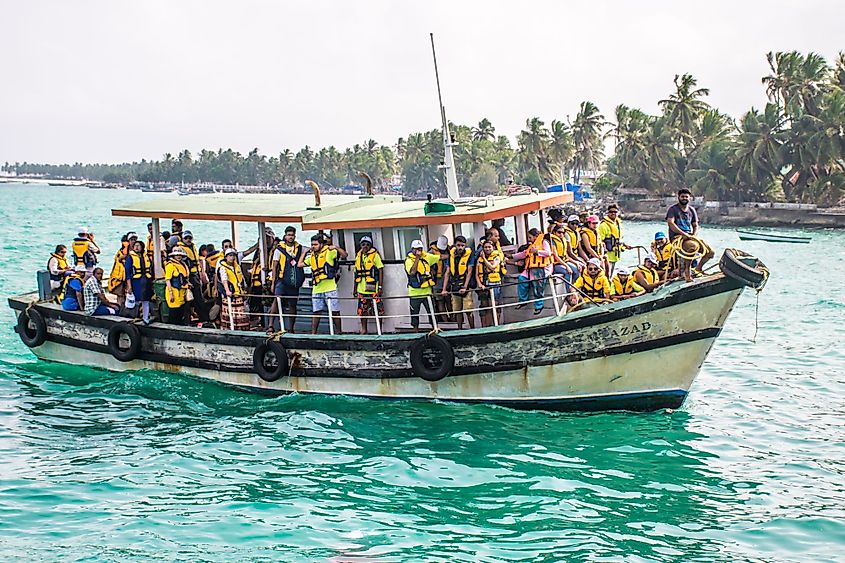
As per the 2011 census, Lakshadweep is home to 64,473 people, of which 33,123 people are males and 31,350 people are females, with a ratio of 946 females per 1000 males. The population density is 2,013 inhabitants per sq. km. The Union Territory has an urban population of 50,322 and a rural population of 14,141. Scheduled Tribes constitute 94.5% of the territory’s total population. It is believed that most of the people of Lakshadweep are descendants of migrants from India’s Malabar Coast, who came to the Lakshadweep Islands sometime around the 7th century CE. About 96.58% of Lakshadweep’s population are followers of Islam, 2.77% are followers of Hinduism, 0.49% are followers of Christianity, and 0.16% are followers of other religions. The most widely spoken languages in Lakshadweep include Malayalam, Jeseri, Mahl, and Hindi.
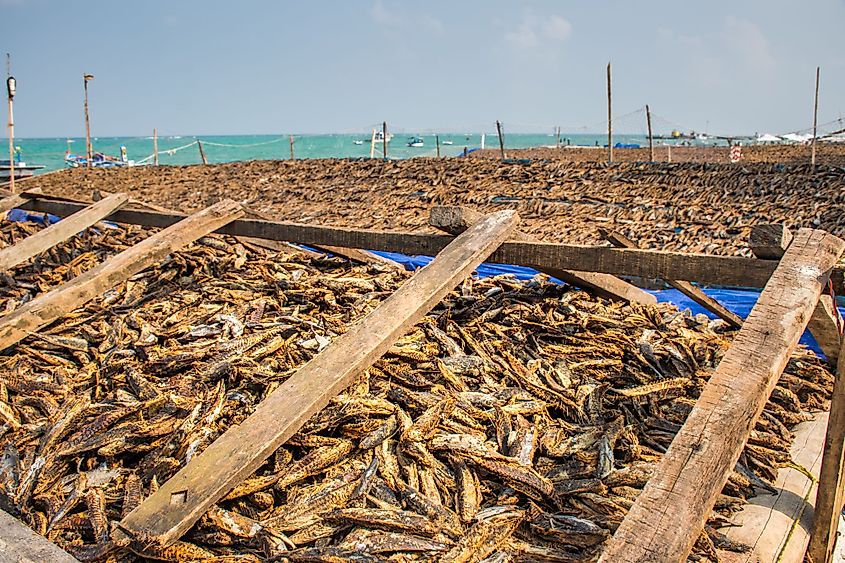
The economy of Lakshadweep is mainly driven by agriculture, fishing, manufacturing industries, and tourism. Some of the significant economic activities in Lakshadweep include the production and extraction of coconut fibre, boat building, weaving, hosiery production, and food processing. Fishing also accounts for a major part of the territory’s economy, with tuna fishes being the primary catch. After cooking and smoking, the freshly collected tuna is processed by drying in the sun. The resultant product, locally known as ‘masmin,’ is considered to be the territory’s most popular product that is exported to the Southeast Asian countries.
Tourist Attractions In Lakshadweep
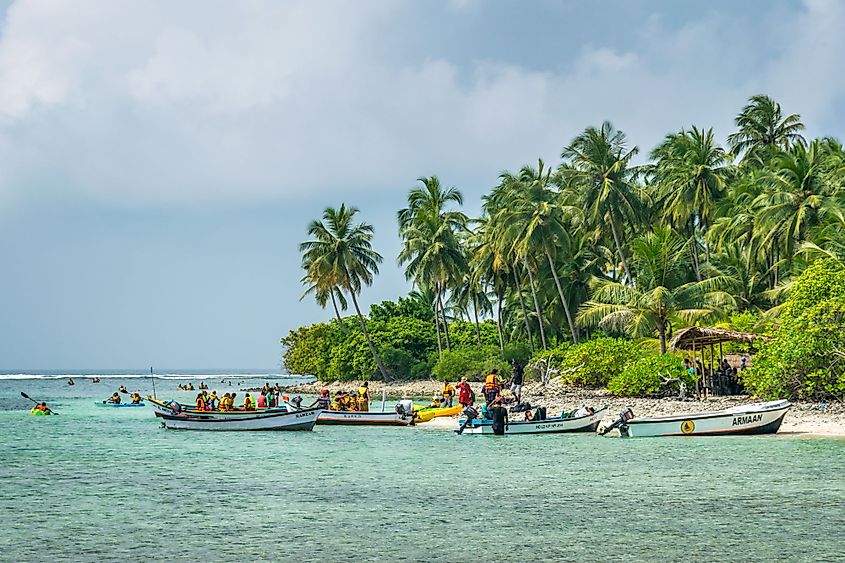
The Lakshadweep Islands are considered one of the most popular tourist destinations due to their isolated location and scenic beauty. Therefore, the Government of India actively promotes tourism to generate revenue in the Kadmat and Bangaram Islands. Located close to Agatti and Kavaratti Islands, Bangaram Island will soon become one of the most significant international tourist destinations. Moreover, the tourists are attracted by the abundant marine fauna and many outdoor recreational activities like scuba diving, snorkeling, kayaking, water skiing, yachting, windsurfing, canoeing, sportfishing, and night sea voyages. However, to protect the fragile ecosystem of the Lakshadweep Islands, the tourism industry is closely monitored, and permits are necessary to visit the Union Territory.
Brief History of Lakshadweep
Since there are no aboriginal inhabitants on the Lakshadweep Islands, several different theories have been suggested by scholars regarding the settlement of the Lakshadweep Islands. Archaeological evidences have revealed that a human settlement existed in the region around 1500BCE. The islands were first mentioned in the “Periplus of the Erythraean Sea” in the 1st century CE. As per traditional beliefs, the islands’ early settlers were the shipwreck members of Malayalis, who were on their way from Dharmadom in Kannur to Mecca to bring back King Cheraman Perumal in the 9th century. An Arabian saint named Shiekh Ubaidulla converted all the early Hindu inhabitants of the island to Islam in 661CE. In the 16th century, the Portuguese took control of the archipelago. However, in 1545, the islanders expelled the Portuguese from the archipelago. In the mid-16th century, the Kolattiri Raja conferred all the inhabited islands of Lakshadweep as ‘jagir’ on the ruling family of the Cannanore Kingdom. In 1787, the Amindivi group of islands was taken over by Tipu Sultan. However, after the Third Anglo-Mysore War, the British occupied the Amindivi group of islands. In due course, the rest of the islands also eventually came under British rule and became a part of the Malabar District. During the reorganization of Indian States on November 1, 1956, the islands were separated from the Malabar District and recognized as a new Union Territory. The new Union Territory was initially named “Laccadive, Minicoy and Amindive Islands.” On November 1, 1973, the “Laccadive, Minicoy, and Amindive Islands” were renamed “Lakshadweep Islands.”


